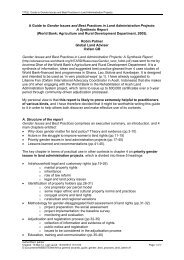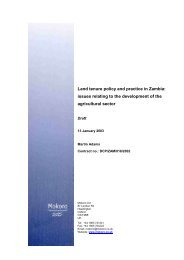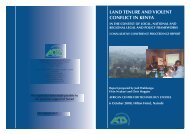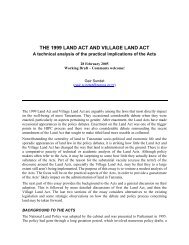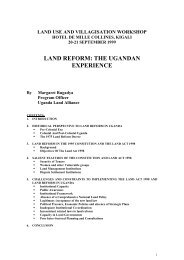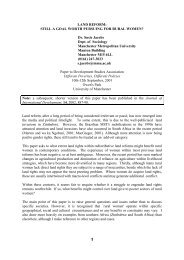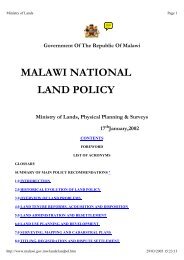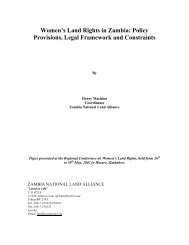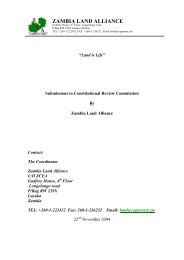Download - Mokoro
Download - Mokoro
Download - Mokoro
- No tags were found...
Create successful ePaper yourself
Turn your PDF publications into a flip-book with our unique Google optimized e-Paper software.
386. INTERNATIONAL EXPERIENCESFor South Africa, the most relevant experiences from which to learn about restructuringfarming sectors through land reform are from other settler colonies in Africa, as well asLatin America where similar inequalities in land distributions were confronted in ratherdifferent ways (Cliffe 2007). Restructuring large-scale commercial farming sectors inconditions of great inequality has most commonly been pursued through the promotionof smallholder agriculture, either through land-to-the-tiller reforms (for tenants) orthrough breaking up large estates for allocation to small farmers. Smallholder productionis often conceived as a relic of pre-capitalist production. However, in most of Africa andbeyond smallholder production on a commercial basis has been routine. Cash crops likecocoa in Ghana and Ivory Coast, coffee in Kenya, Tanzania, Ethiopia, cotton in Ugandahave been grown and exported, some for a century. Food surpluses for growing urbanmarkets and for export are the norm. Specific state interventions helped to create andsupport smallholder sectors, though sometimes on terms that have been distinctlyextractive (Bates 1981). But such developments were curtailed, sometimes by directprohibition in the settler colonies – although in most, as Bundy (1988) reminds us in thecase of South Africa, food needs for the new mines and towns were in the first phase ofdevelopment met by African smallholders. In these countries, including now SouthAfrica, special measures are required to overcome these particular legacies ofdisadvantage in order to resuscitate the potential for smallholder production. Someexperiences of how this was approached elsewhere are explored below.6.1. How have smallholder sectors been promoted/resuscitated?A common feature of initiatives to promote smallholder production in ex-settler coloniesis a geographical focus on strategic areas, sometimes in high-rainfall areas where largefarms and estates under-utilise land and where substantial scope exists forintensification of land use, other times in or on the borders of communal areas. As abasis for identifying areas of opportunity for smallholder production, land capabilityclassification schemes have been used in some countries to identify soils and climaticzones that are suitable to similar crops and require similar management (Dalal-Claytonet al 2003:35).For instance, the five agro-ecological zones in Zimbabwe have long been used as theschema on which land use was planned, and output evaluated. In the Zimbabwe landredistribution of the 1980s different variants of ‘models’ were tailored so as to beappropriate for different zones. Four basic farm models guided subdivision andtransformation of the commercial farming areas there. Although much acquisition by thestate was ad hoc, there was some attempt to acquire farms adjacent to one another, tomake possible planning at scale and provision of infrastructure for markets, inputs andsupport to support new types of land use. These models included cooperatives runningexisting farms as units, but the others were all based on small scale farming where thepurpose was to sell surplus food as well as some cash crops, including one for ‘outgrowers’around plantations to utilise processing plants and one model that was aformula for extending boundaries of some drier communal areas suffering a severeshortage of grazing. The predominant one (Model A) demarcated an acquired farm or acluster into small arable household holdings and a common grazing area (in drier areas,Policy Options for Land and Agrarian ReformProgramme for Land and Agrarian Studies, University of the Western Cape




